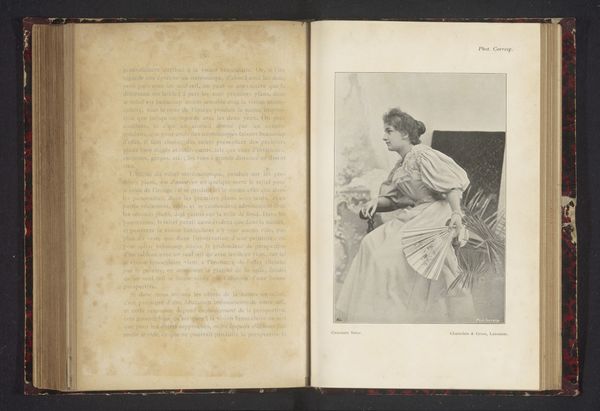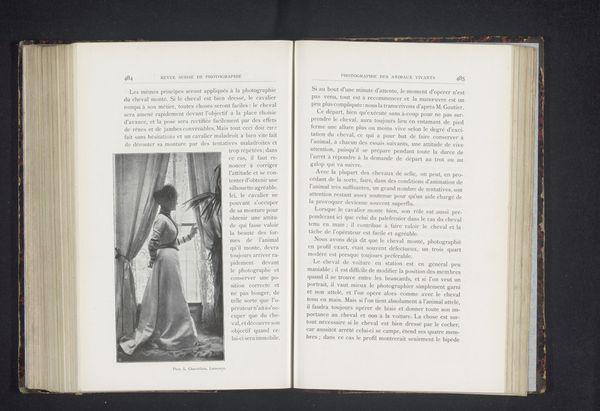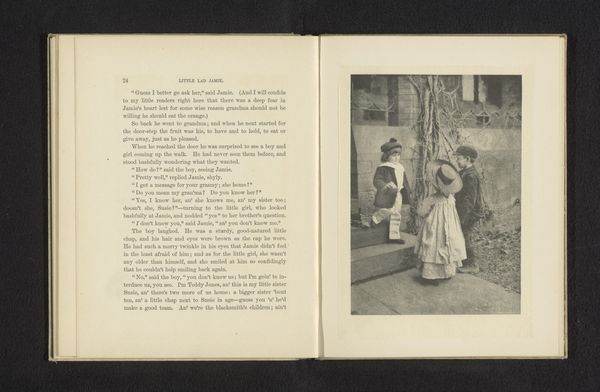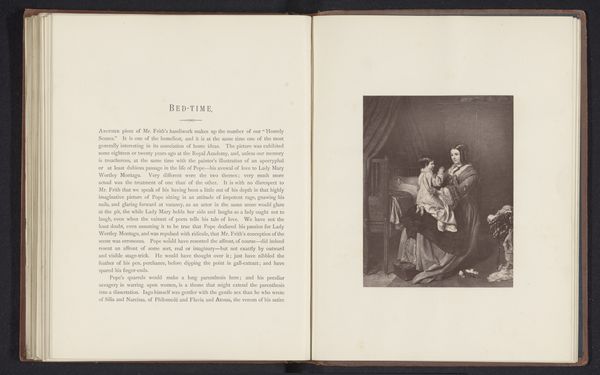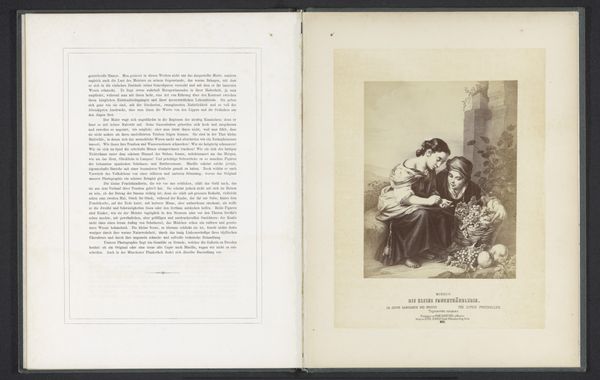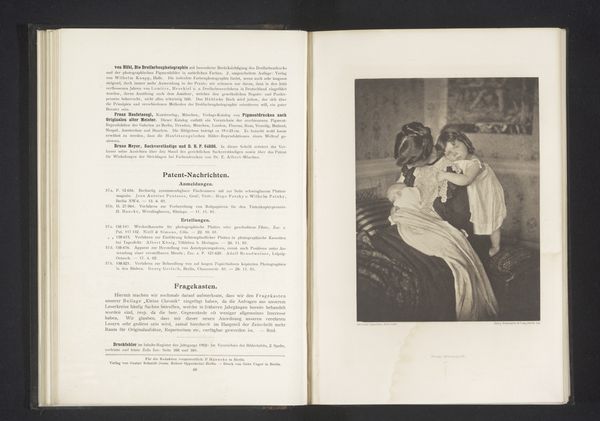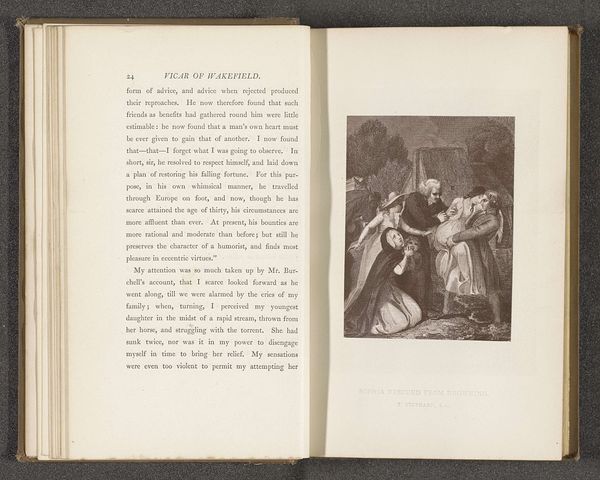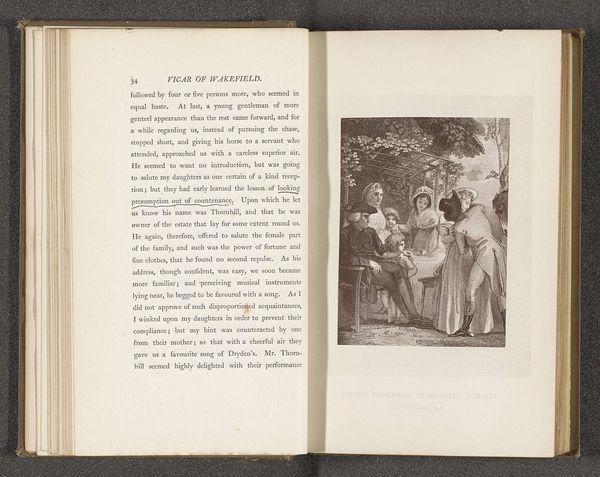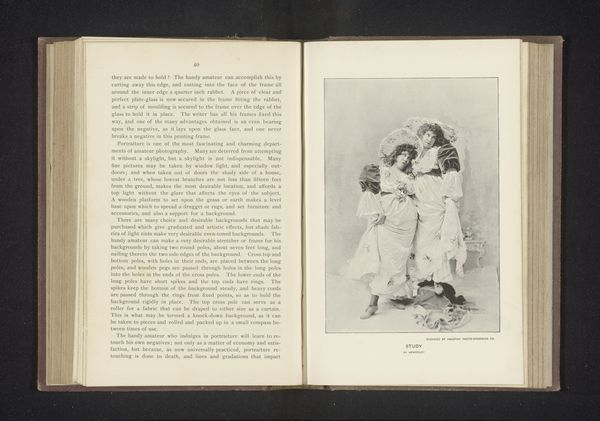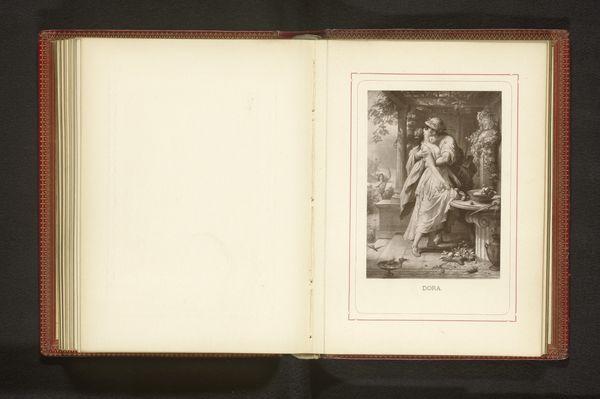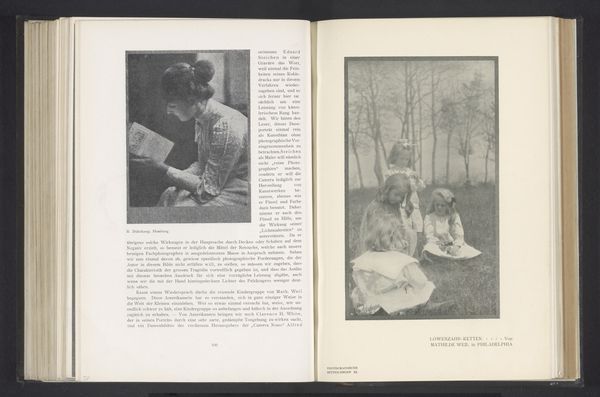
print, paper, photography
#
portrait
#
script typeface
#
aged paper
#
still-life-photography
#
script typography
#
paperlike
# print
#
paper
#
photography
#
hand-drawn typeface
#
thick font
#
publication mockup
#
paper medium
#
thin font
#
publication design
Dimensions: height 132 mm, width 95 mm
Copyright: Rijks Museum: Open Domain
Editor: So, here we have "Twee vrouwen bladeren in een boek" – that's "Two Women Leafing Through a Book" – by Fritz Loescher, made before 1903. It appears to be a photograph, probably reproduced as a print in a book. There's something really intimate about the way the women are looking at the book together. How do you interpret this work? Curator: The photograph resonates with its quiet depiction of female companionship, a space of shared knowledge and perhaps resistance, existing in a world where women’s intellectual pursuits were often marginalized. Consider the power dynamic inherent in who had access to literacy and education during this time. Do you think the book is merely a prop, or is it central to understanding the agency of these women? Editor: That’s interesting. I hadn't thought about it in terms of resistance, but you're right – literacy wasn’t always accessible. I assumed it was just a snapshot of domestic life. So, you’re seeing this moment as an assertion of female intellect, challenging social norms? Curator: Precisely. Think about what that act of reading and learning together could signify in a patriarchal society. This image, seemingly simple, can be a potent statement about women’s pursuit of knowledge and their collaborative intellectual lives, a challenge to the traditional limitations imposed on them. Do you see elements of performativity too? Perhaps the staging of the image carries meaning? Editor: That makes so much sense. It gives the photograph so much more depth when you consider the historical and social context. I will never see pictures the same way. Curator: Exactly. Analyzing art within broader intersectional narratives allows for a deeper understanding. Art always invites conversation between its creators, the culture in which it was conceived and us, the viewers.
Comments
No comments
Be the first to comment and join the conversation on the ultimate creative platform.
